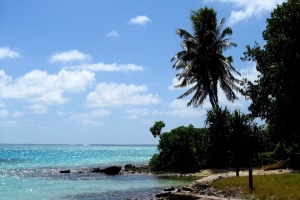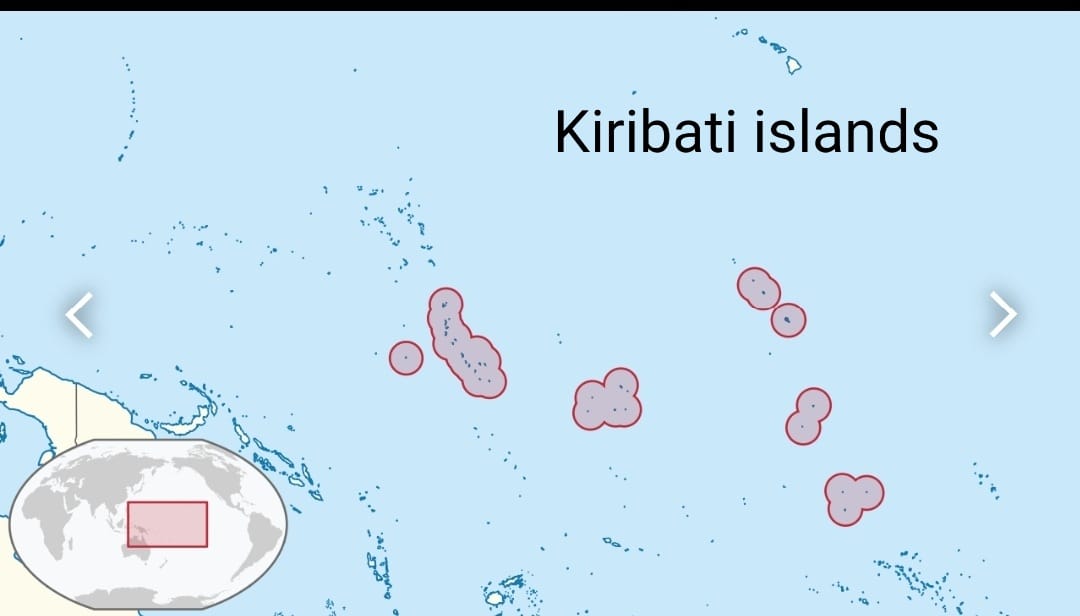
COVID-19 Notes
 By Dr Satish K Gupta*
By Dr Satish K Gupta*
Why couldn’t Kiribati remain free from Covid?
The Republic of Kiribati, an independent island nation in the Central Pacific Ocean, had managed to keep Covid away by closing its borders for two years. However, the moment they reopened and the first flight landed, the virus came rushing in.
Kiribati is one of the most isolated islands in the world. It is some 5,000km (3,100 miles) from its nearest continent, North America.
Lesson
The virus doesn’t travel in the air rather it travels by air with human beings, especially long distances.
The country, which has a population of 119,000, started facing challenges with the outbreak of the virus in mid-January 2022 when the rest of the world was already struggling with the Third wave.
In the hour of crisis, India and many other nations stepped in to provide relief. Kiribati being a remotely located country poses logistical challenges, hence the supplies from India were despatched on a flight coordinated by the Australian government.
Kiribati Timeline
Proactive Stringent emergency, repeated lockdowns, curfews – all since February 2020 till for two years could not stop the Covid Wave. Let’s look at the Kiribati timeline to see how things unfolded.
February 2020
On 1 February 2020, the government of Kiribati put all visas from China on hold (as China was the Hotbed of Covid at that time)
and travellers from countries with the coronavirus were asked to go through a self-quarantine period.
Despite not having any cases, on March 28, 2020, Kiribati declared a state of emergency.
September 2020: All borders closed
On September 10, 2020, the government closed its borders until the end of the year to keep the country free of the virus.
On November 19, 2020, the government repatriated 62 citizens, who had been stranded abroad since February 2020. Mandatory 14-day quarantine found no one infected.
On May 15, 2021, Kiribati repatriated 1,400 citizen seafarers stranded abroad who became jobless for the want of negative PCR test which could not be done because Kiribati had no machine to perform RTPCR.
Luckily no virus this time too.
The first case in Kiribati
On May 18, 2021, the first positive case was announced, in a local seafarer returning from Papua, New Guinea on a ship. Two days later, a second positive case was detected on the same ship.
The same day, a curfew was imposed.
On May 25, 2021, the repatriation program was suspended to deal with positive cases.
January 2022
Nearly two years after the pandemic hit the globe, Kiribati re-opened its border to international travellers on January 10, 2022. The border had been closed since March 2020. Till now there were no masks nor any social distancing norms in Kiribati. But all changed soon as a few days later, the first international commercial flight (carrying Christian Saints) in two years – landed in Kiribati and with it came to the Virus gushing- 36 of the 54 passengers on the plane tested positive for COVID-19 upon arrival. It is noteworthy that Kiribati officials tested each returning passenger three times in nearby Fiji, required that they be vaccinated, and put them in quarantine with additional testing when they arrived home. It wasn’t enough.
Lesson
- Even saints who supposedly maintain a healthy lifestyle and stress-free ecosystem are vulnerable to the virus. The virus has no mercy
- Newer Variants can override the vaccine-induced immunity
- However, about one-third of the vaccinated population can remain protected even from infection by newer variants despite long close contact in confined space!
In response to the larger number of COVID cases from the flight, the government announced a nationwide curfew beginning January 19, 2022, and made mask-wearing compulsory.
On January 22, 2022, the country went into lockdown due to confirmed community transmission of the virus.
Lesson Learnt
With huge caseload community transmission may begin in just takes 7 to 10 days despite curfew and lockdowns
Master lesson
- Covid is inevitable.
- In today’s economic interdependent world Covid will get to every corner of the world.
- Curfews and Lockdowns are no permanent solutions They just buy enough time to prepare and vaccinate as many people as possible because vaccination protects
Vaccination in Kiribati
Kiribati was one of the last countries to have not started a vaccination programme till End of May 21. On 25 May 2021, Kiribati received its first 24,000 doses of the AstraZeneca vaccine via COVAX.
Kiribati having given more than 1,11,000 doses of vaccine by 10 Jan 2022 thought itself enough vaccinated to open international borders.

But the virus was waiting to infect large numbers of vulnerable.
Infections following community transmission, in absence of community seropositivity, were quick and manifold (~5 times) in comparison to the world data of the Third Wave.

Case scenario
In Kiribati, from January 3, 2020, to February 23, 2022, there have been 2,861 confirmed cases of COVID-19 with 11 deaths.
Lesson learnt
Single-dose vaccination of about 55 to 60% of the population and double dose vaccination 35%of population in absence of Natural infections may not be sufficient to prevent a surge in cases or Wave
Hybrid immunity by vaccination and Natural infection is a better combo.
What’s the Future of Virus in Kiribati?
It will be interesting to see how the pandemic unfolds in Kiribati in times to come. The First Wave becomes the final wave or pandemic takes its usual three-wave shape.
Also read: Understanding Covid-19: Is Omicron a universal vaccine?
*Dr. Satish K Gupta is an MD in Medicines, a Visiting Senior Consultant Physician and Internist at Max Super Speciality Hospital, and a Clinical Assistant Professor at GS Medical College, Chaudhary Charan Singh University, Meerut. He is the author of Journey of COVID in India: A Doctor’s Perspective.






